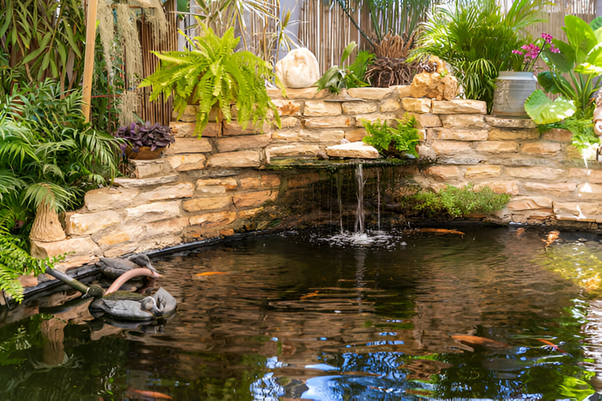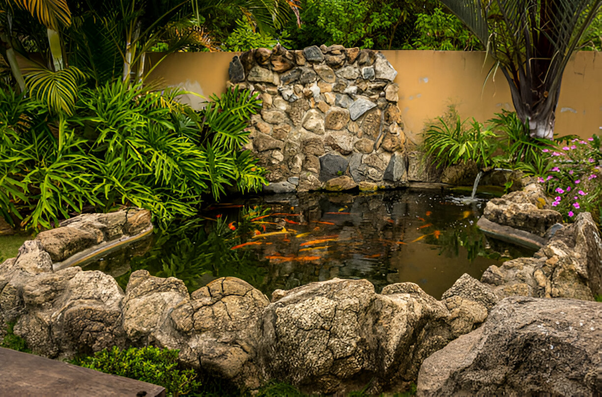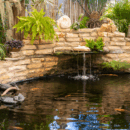How Koi Ponds Transform Gardens into Living Art

When you add a koi pond, outdoor locations take on a more artistic look with their flowing water, bright colours and peaceful energy. Rather than only water features, they are also balanced ecosystems that blend beauty with the natural harmony of living things.
With time, the pond develops into a miniature ecosystem where koi and aquatic plants both thrive, always keeping the area fresh and beautiful for everyone to enjoy. Oase pressure filters are one of the reasons why experts at That Pond Guy recommend them, as these devices guarantee clean water for koi with very little effort from you.
Defining the Koi Pond
When decorative koi carp are grouped in an artificial water garden, it becomes known as a koi pond. Since fish may be attacked by predators or endure extreme temperature changes, these ponds tend to be 1.2 metres or deeper than traditional garden ponds.
Good health for fish in koi ponds depends on using filtration systems, proper aeration and proper water chemistry.
A koi pond’s design frequently incorporates plants, rocks, and occasionally waterfalls. These components assist preserve water quality and produce an environment that looks natural. There are small koi ponds designed to enhance homes and large koi ponds that are part of big exhibits.
What Is Unique About Koi Ponds?
- Purpose-built for koi: Deeper (1.2m+) than decorative ponds to protect fish from predators and temperature swings.
- Balanced ecosystem: Aquariums need water to be carefully filtered, well-oxygenated and have some plant life to be healthy.
- Living heirlooms: Koi are known to live for 20–30 years and can develop unique personalities that appeal to their owners.
Key Components for Success
1. Filtration System
- Mechanical filters trap debris (leaves, fish waste).
- Beneficial bacteria in biological filters are responsible for eliminating dangerous substances in the water.
- With UV clarifiers, algae die, and water remains in a clear, clean state.
Oase pressure filters excel at handling heavy waste loads while being energy-efficient.
2. Water Movement
- Pumps should circulate the entire pond volume hourly.
- Waterfalls or fountains boost oxygen and add visual drama.
3. Smart Design Choices
- Location: Partial shade, away from tree litter.
- Size: Minimum 1,000L (220 gallons) for 4–5 koi.
- Depth: Shelves for plants + deep zones (1.5m ideal) for fish safety.
Koi Care Essentials
Water testing: Weekly checks for pH (7–8.5), ammonia (0ppm), and nitrites.
Seasonal adjustments:
- Spring: Resume feeding gradually; clean filters.
- Summer: Provide shade; monitor oxygen levels.
- Autumn: Reduce feeding; net falling leaves.
- Winter: Stop feeding below 10°C; prevent ice-over.
- Disease prevention: Quarantine new fish; watch for lethargy or spots.
Enhancing Your Pond’s Appeal
- Plants: Water lilies (shade + beauty), hornwort (oxygenation), marginal irises (natural filtration).
- Features: Subtle lighting, stepping stones, or a wooden bridge for viewing.
- Predator protection: Heron decoys, pond nets, or aerators to disrupt visibility.
A skilfully designed koi pond brings much more than beauty; it is a daily way to unwind and feel better. You can receive advice on fish tanks and their design from That Pond Guy, who will help you prevent common issues and achieve a sustainable pond.
















